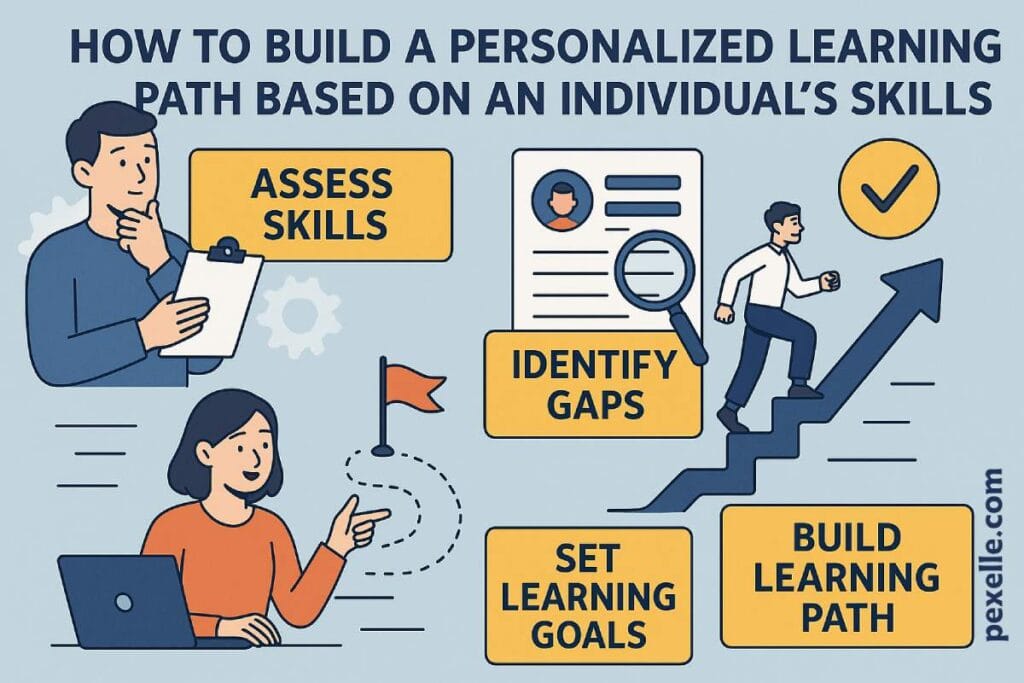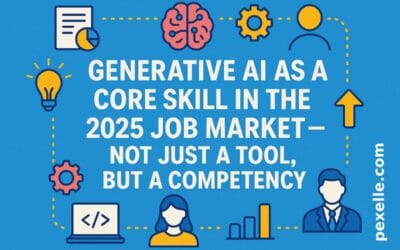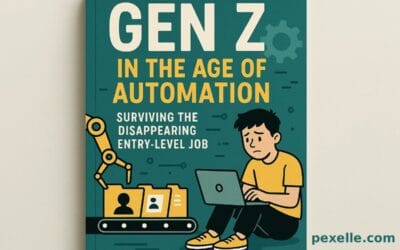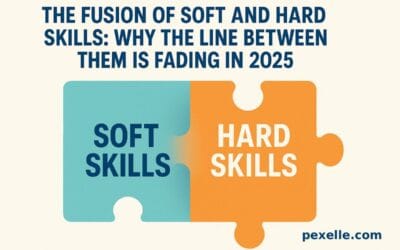How to Build a Personalized Learning Path Based on an Individual’s Skills

Introduction: The Power of Personalized Learning
In today’s rapidly evolving job market, a one-size-fits-all approach to education is no longer effective. Personalized learning paths are emerging as a powerful method to help individuals acquire relevant skills faster, stay motivated, and achieve career goals. By tailoring the learning journey to a person’s existing skills, experience, and ambitions, organizations and individuals can create an efficient roadmap to success.
Step 1: Assess the Individual’s Current Skill Set
The foundation of a personalized learning path starts with a clear understanding of where the learner currently stands.
This can be done through:
- Self-assessment tools such as online quizzes and skill-mapping platforms.
- Standardized competency frameworks like ESCO or O*NET.
- Manager or mentor evaluations for workplace training.
The goal is to identify both hard and soft skills, as well as gaps that need to be addressed for the individual’s target role or industry.
Step 2: Define Learning Objectives and Career Goals
Once the current skills are mapped, the next step is setting clear, achievable objectives. These could include:
- Gaining expertise in a specific technology.
- Achieving a professional certification.
- Improving leadership or communication skills.
By aligning objectives with personal aspirations and industry demands, learners stay motivated and committed to their growth path.
Step 3: Identify the Required Skills for the Target Role
To design an effective learning path, it’s essential to understand the destination. Research the skills needed for the target job or role:
- Use job postings from platforms like LinkedIn or Indeed to identify common requirements.
- Consult industry reports to predict future skill trends.
- Use AI-powered career matching tools to find the most relevant competencies.
Comparing this list to the individual’s current skills will reveal the skill gap that the learning path must bridge.
Step 4: Curate the Right Learning Resources
A personalized path is not just about what to learn, but also how to learn it. Resources can include:
- Online courses (Coursera, Udemy, edX, LinkedIn Learning)
- Mentorship programs
- Workshops and bootcamps
- Real-world projects and internships
Different people learn differently—some may prefer video tutorials, while others thrive with hands-on practice or collaborative learning.
Step 5: Structure the Learning Path into Milestones
Breaking down the journey into smaller, measurable steps keeps motivation high and progress visible.
For example:
- Foundation stage – Learn the basics and essential terminology.
- Intermediate stage – Work on guided projects and case studies.
- Advanced stage – Solve real-world problems and complete certification exams.
Each milestone should have clear outcomes and performance indicators to measure success.
Step 6: Integrate Feedback and Continuous Improvement
A personalized learning path should evolve over time. Regular feedback—whether from mentors, peers, or self-reflection—helps identify what’s working and what needs adjustment.
Modern AI-based learning platforms can adapt recommendations in real-time based on performance, engagement, and skill progress.
Step 7: Track Progress and Celebrate Achievements
Tracking progress is essential for maintaining motivation. This can be done through:
- Learning management systems (LMS)
- Digital badges and certificates
- Portfolio creation to showcase completed projects
Celebrating milestones, no matter how small, keeps learners motivated and committed to their goals.
Benefits of Personalized Learning Paths
- Increased engagement – Learners are more motivated when the content is relevant.
- Faster skill acquisition – Focused learning eliminates unnecessary material.
- Career alignment – Skills are directly tied to professional ambitions.
- Greater retention – Customized learning improves long-term knowledge retention.
Conclusion
Building a personalized learning path based on an individual’s skills is a strategic approach to education and career development. By assessing current skills, defining clear goals, identifying skill gaps, curating the right resources, and continuously adapting the plan, individuals can accelerate their growth and stay competitive in an ever-changing world.
In the future, AI-driven personalization and skills-based learning platforms will make this process even more effective, ensuring that each learner gets the exact knowledge they need—at the right time and in the right way.
Source : Medium.com




